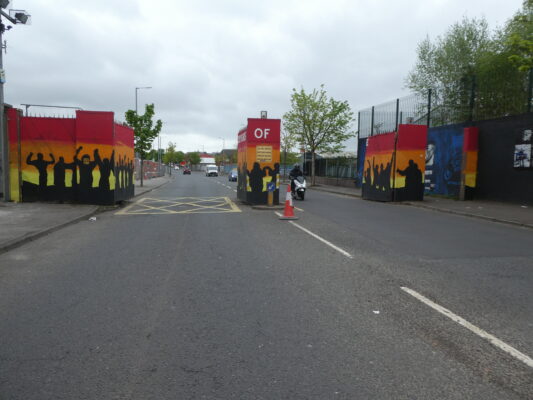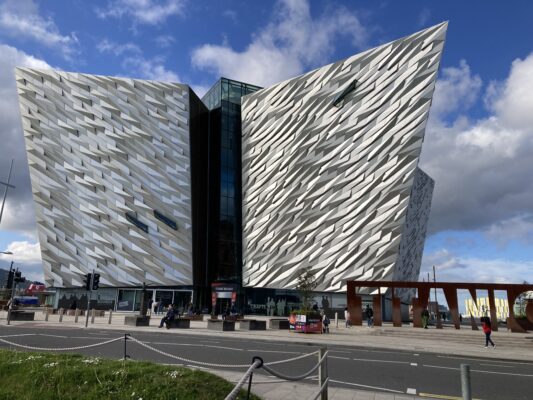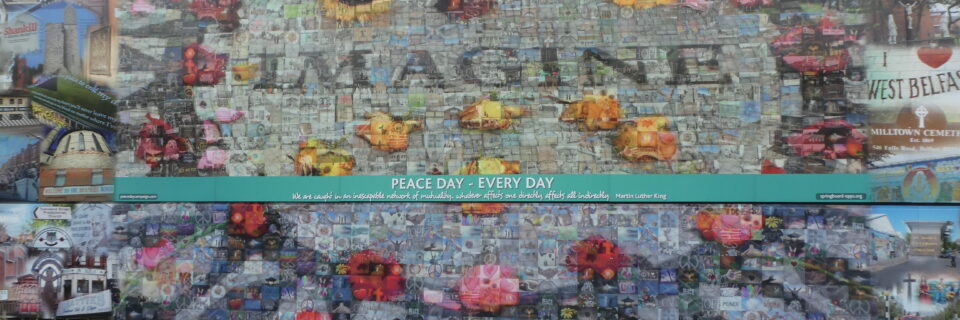I am very happy to finally be in Ireland! This trip was scheduled in May of 2020 but canceled due to Covid.
My first few days are spent in Belfast where two highlights are a Black Taxi tour of the neighborhoods involved in the Troubles, and a visit to the Titanic Museum.
The Troubles between Protestant Unionists and Catholic Republicans began in 1968 and lasted thirty years. The Unionists wanted Northern Island to remain part of the United Kingdom; the Republicans wanted Northern Ireland to leave the UK and reunite with the Republic of Ireland, and as a minority, they wanted the Protestant Unionist majority to stop discriminating against them. Republicans carried out a bombing campaign against British forces who then retaliated. There were numerous riots, mass protests, and acts of civil disobedience which led to increased segregation of Catholics and Protestants. More than 3,500 people were killed. The peace process that eventually ensued led to cease-fires and talks between the political parties resulting in the Good Friday Agreement signed in 1998. The 25th anniversary of that Agreement was just celebrated but the division between Protestants and Catholics remains.
Our guide takes us to the segregated communities, separated by locked gates and a very high “peace wall.” Catholics don’t patronize Protestant establishments and vice versa. The conflict is passed down through generations. Many murals depict the martyrs. Some of those murdered were young children. Even though issues around religion, politics, and class remain, Catholics and Protestants mix in the workplace downtown and in the universities.








In dramatic contrast, yet also sad, is the story of the Titantic, built in Belfast harbor starting in 1908. It was the largest ship in the world at the time, elegantly and luxuriously designed and fitted with the finest materials. The Harland and Wolff shipyard employed 14,000 men to build Titanic and her sister ship, Olympic. It took more than three million rivets to hold the steel plates to the frame of the ship.


Titanic was thought to be “virtually unsinkable” due to its watertight bulkheads. However, the bulkheads only reached ten feet above the waterline, allowing water to get from one compartment into the next. This turned out to be a fatal design flaw. On April 10, 1912, the ship set sail from Southampton England. Just five days later on April 15, she hit an iceberg in the North Atlantic near Newfoundland and within two hours had completely sunk. There were 2240 passengers and crew on board. More than 1500 died.
The architecturally stunning museum beautifully commemorates Titanic, covers her history from the drawing board, through construction, launching, and fateful end, and includes oceanographer Robert Ballard’s search for and ultimate location of the ship in 1985 at the bottom of the Atlantic Ocean.


Bonus! Walking by Belfast City Hall, I notice a large crowd watching King Charles’ coronation on a Jumbotron set up on the lawn. There’s a small “throne” on which a “gold crown” sits for onlookers to take turns pretending to be King. The crowd seems to be enjoying the pomp and circumstance while the King looks extremely glum.




1 Comment
Thank you for illuminating the current realities of Northern Ireland and the Republic of Ireland .